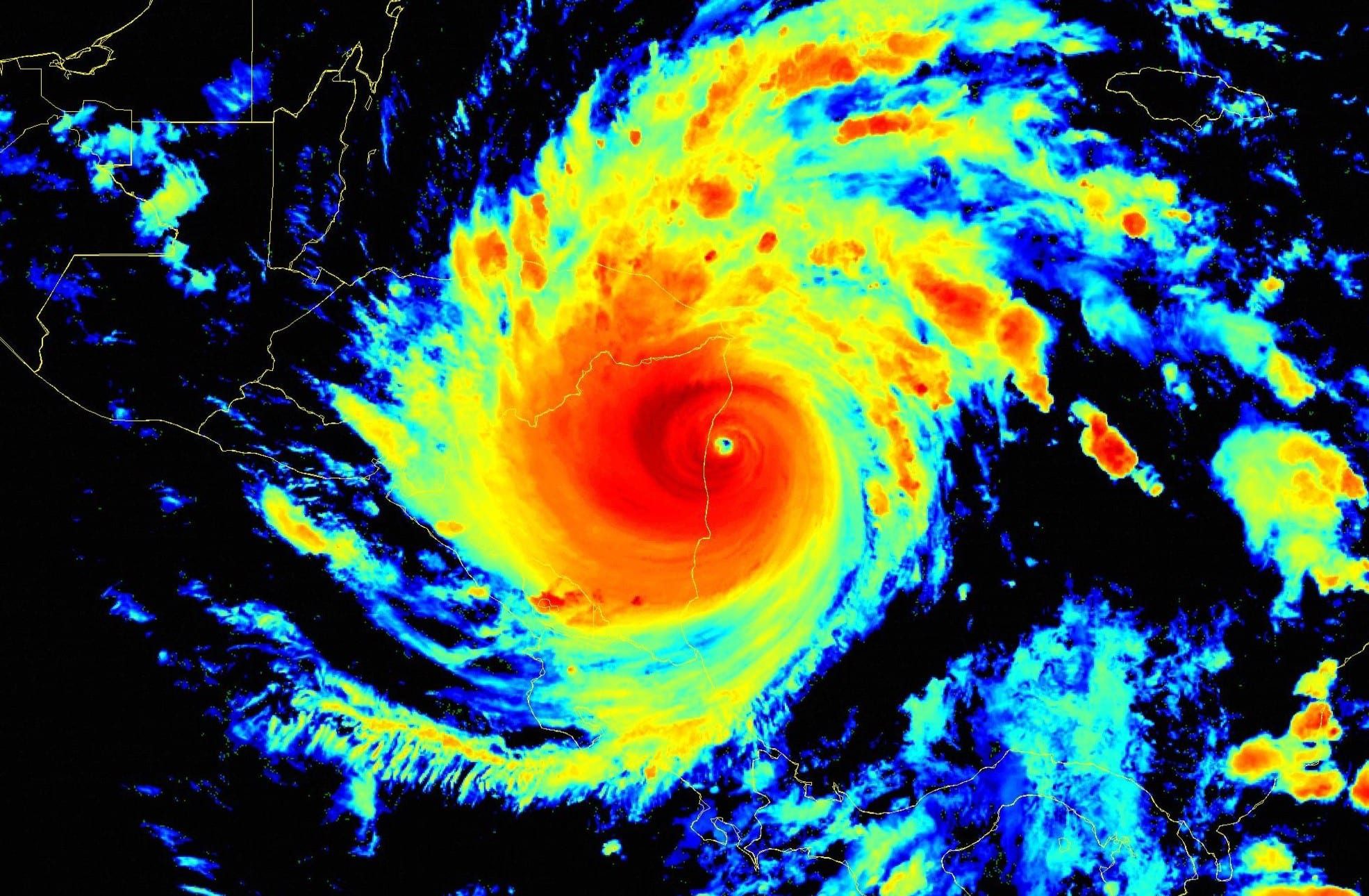Hurricane Iota pictured around 10 p.m. EST, November 16, 2020, as it approached the Nicaragua coast. Image: NOAA/GOES

By Wilmer Lopez PUERTO CABEZAS, Nicaragua, Nov 17 (Reuters) – Hurricane Iota sent zinc roofing flying into the streets, toppled electricity poles and flayed palm trees as it battered northeastern Nicaragua on Tuesday, the second giant storm to strike Central America this month.
Iota hit Nicaragua late on Monday, blowing sustained winds of nearly 155 miles per hour (249 kph). By 6 a.m. (1200 GMT), its winds had fallen to 85 mph (137 kph) as it moved inland, the National Hurricane Center (NHC) said.
The port of Puerto Cabezas, still partly flooded and strewn with debris from the force of Hurricane Eta two weeks ago, again bore the brunt of the storm. Frightened residents huddled in shelters and worried about food and their lives.
“We could die,” said one, Inocencia Smith. “There is nothing to eat at all,” she added, noting that the area’s farms were wrecked by Eta.
The wind tore the roof off a makeshift hospital. Patients were evacuated, including two women who gave birth during the first rains of the storm on Monday, and others in intensive care, Vice President Rosario Murillo told a news conference.
About 40,000 people in Nicaragua have been evacuated to shelters, authorities said. Many coastal areas are at risk of storm surges of as much as 20 feet (6 meters) above normal tides. In Honduras, 80,000 people were moved to safety.
“It’s the strongest hurricane that has touched Nicaraguan soil since records began,” said Marcio Baca, director of the Nicaraguan Institute of Earth Studies.
By early morning, Iota was about 90 miles west-southwest of Puerto Cabezas, the NHC said. It was expected to weaken to a tropical storm quickly as it barreled through southern Honduras and into El Salvador.
This is the first time two major hurricanes have formed in the Atlantic basin in November since records began in 1851.
Iota was also the first category 5 storm of the hurricane season before losing a little wind speed off the coast to reach land as a category 4.
Even after weakening, Iota’s rain – with up to 30 inches (76 cm) expected – could cause landslides and more flooding across the water-logged region, the NHC warned, compounding the damage wrought by Eta across Central America.
Eta devastated crops and washed away hillsides two weeks ago, killing dozens.
“We are in the hands of God. If I have to climb up trees, I’ll do it,” said Jaime Caal Cuz, 53, a farmer in Guatemala’s southeastern province of Izabal. After taking his family to a shelter, he stayed to guard the house and their belongings.
“We don’t have food, but we are going to wait here for the hurricane that we’re asking God to stop from coming,” he said. (Reporting by Wilmer Lopez in Puerto Cabezas, Ismael Lopez in Mexico City, Gustavo Palencia in Tegucigalpa, Sofia Menchu in Guatemala City; Writing by Daina Beth Solomon; Editing by Frank Jack Daniel, Robert Birsel and Timothy Heritage)
(c) Copyright Thomson Reuters 2020.

 Join The Club
Join The Club











